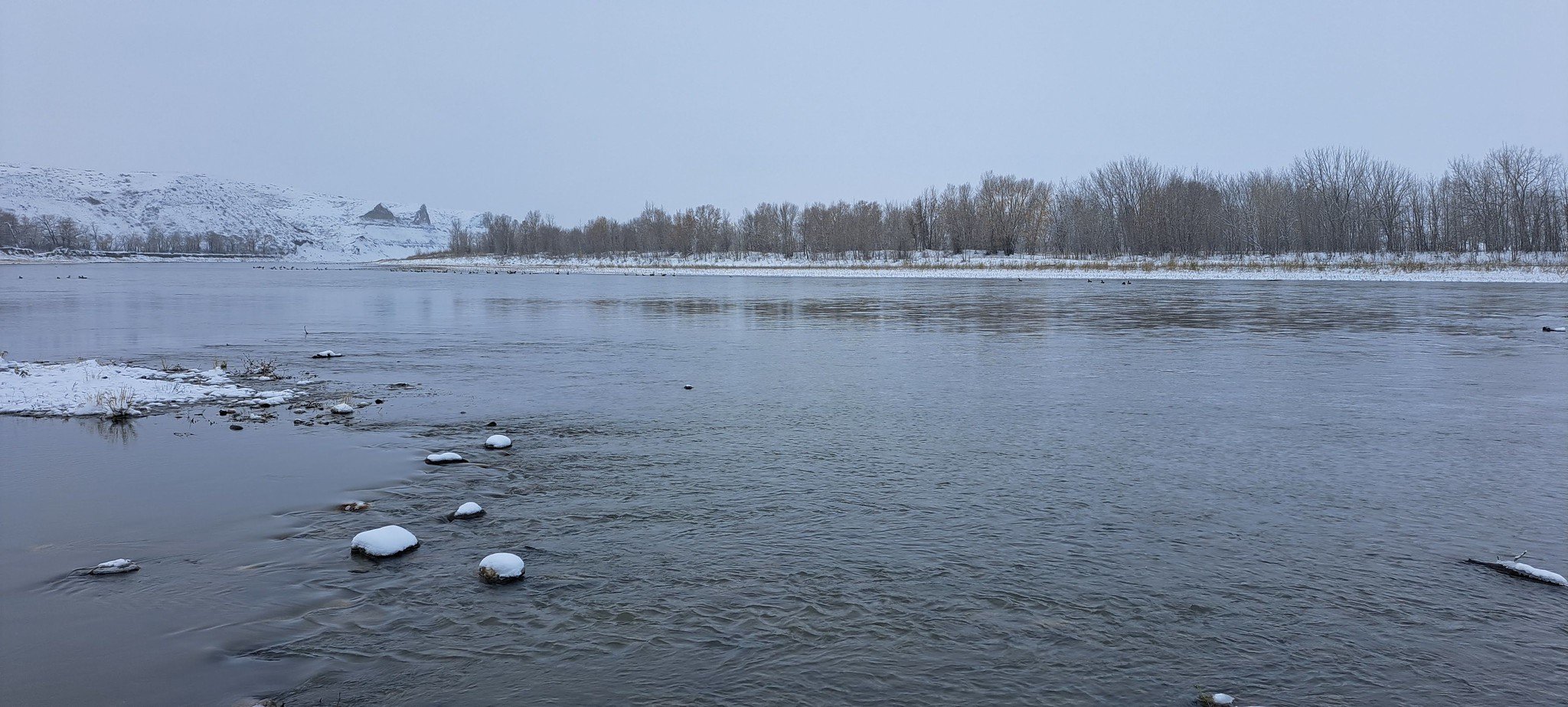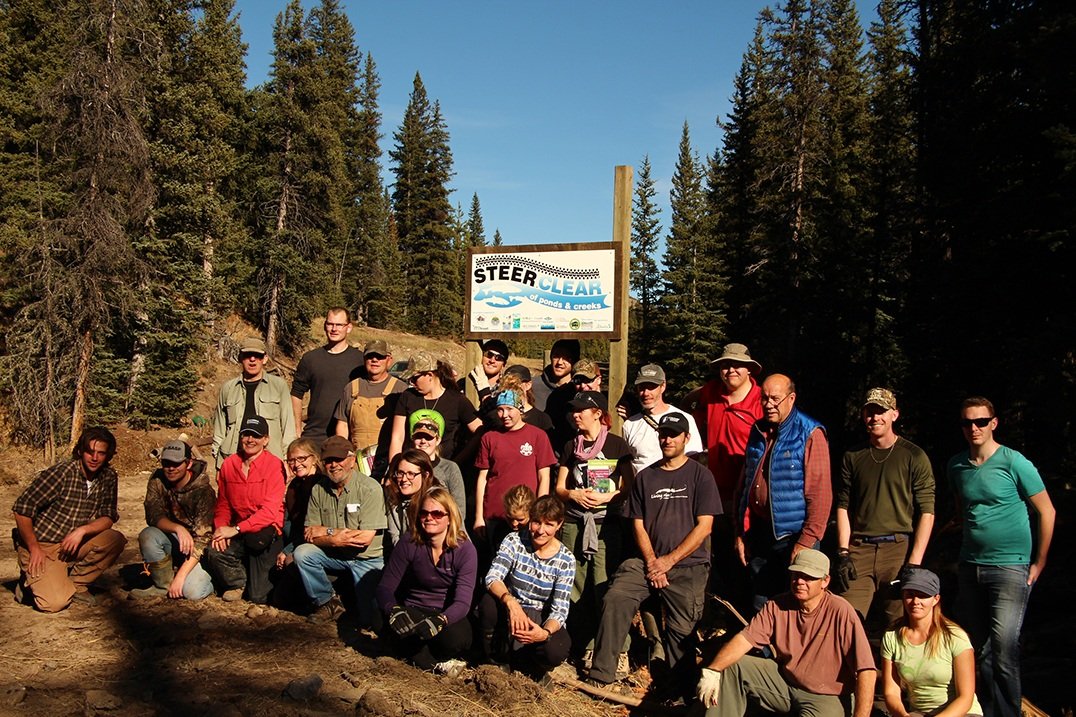Banner photo by Kallie Val-Zehan Desruisseaux. Blog by Writer & Content Specialist Sarah Moore.
On Oct. 30, 2025, the Alberta legislature introduced Bill 7: Water Amendment Act, which would make several changes to the Water Act around water use reporting, transferring licenses, moving water between basins, and more. In this blog, we summarize what the most significant of these changes mean for the Oldman basin and for water license holders in our watershed.
The basics of water management
Before we get into the changes, here’s a quick refresher of how water is managed in Alberta:
The Ministry of Environment and Protected Areas manages water licenses through the Water Act and allocates or refuses water to those that apply.
Since 1894, over 20,000 water licenses have been issued in the South Saskatchewan River watershed (the watershed that includes the Oldman watershed).
Older licenses have access to water before newer licenses (commonly referred to as “first in time, first in right”).
Because many licenses have already been allocated in our semi-arid region, no new licenses (aside from a couple of exceptions) are available in the Oldman watershed, as of 2006–07.
People who need water for their business, farm, or municipality can purchase an existing license and apply to the Ministry of Environment and Protected Areas to have the license (or part of one) transferred.
Now into the changes in Bill 7, which was introduced following a period of public engagement. You can find detailed results from the surveys and engagement process here, which were obtained through a Freedom of Information request by the Alberta Wilderness Association.
Water use reporting
While we know what amounts of water are allocated to license holders in Alberta, we don’t always have a clear picture of how much water is actually being used.
That’s because only about 1 in 5 licenses require the holder to report on their water use. Most small licensees are not required to report any information, while most larger licensees have some reporting that must be completed. Many older licenses, regardless of size, have no requirements for reporting, though some report voluntarily. If an emergency has been declared, the Director can issue a water management order for licensees to carry out specified monitoring and reporting (see Section 107 of the Water Act).
This inconsistent reporting means it is challenging to make informed resource management decisions.
Amendments through Bill 7 would make it so that all license holders could be required to report their water use, and licensees must comply with measurement, monitoring, reporting, and inspection requirements in order to be considered in “good standing.” Reporting will be available publicly.
Consistent reporting standards should help in making decisions around water management. This topic was strongly supported in the public engagement process; 90% of survey respondents (120 out of 134 responses) recognized the benefits of introducing mandatory reporting requirements. The province noted that “large water users … do not support additional measuring and reporting requirements, as they believe their current requirements are sufficient.”
Surface water allocation in the Oldman watershed based on “consumptive use,” the maximum annual volume of water that can be taken or diverted under a given licence without being directly returned to the same source. The amount of water actually used by every licensee is not reported. Chart: Adapted from AFETUW.
License transfers
Bill 7 also introduces some changes to license transfers. Under the changes, an applicant getting a license through a transfer must disclose the cost, and the amount paid will be available publicly.
This change is especially relevant in the Oldman watershed, where new licenses are generally not allocated and transfers are the primary way to get a water license.
There have been 407 transfers in Alberta since 2006. Until now, the price of transferring licenses has been fairly opaque but can be millions of dollars. This CBC story from 2024 digs more into this topic.
The transparency of cost could encourage more license transfers, as applicants will be more aware of the potential cost, a point that was brought up in public engagement by licensees.
Another change this year affects holdbacks when water licenses are transferred; while this change is not in Bill 7, it’s worth knowing about.
Holdbacks
When a license is transferred, 10% of the allocation can be withheld if it will protect the aquatic environment or help achieve a water conservation objective—this is called a holdback. In other words, this holdback mechanism leaves a bit more water in rivers that are already stressed from low water levels. In the 407 transfers Alberta has seen, holdbacks were taken in 256.
The subject of holdbacks came up in the public engagement process. The province noted that license holders and those seeking transfers, in particular irrigators and agricultural producers, “are the greatest advocates of removing holdbacks,” often viewing a holdback as a “disincentive,” “burden,” or “tax.” In contrast, “typical public comment generally saw holdbacks as necessary and fair, not applied often enough (i.e., should be mandatory), or should be greater than 10 per cent.”
In April 2025 the provincial government announced new policy directions that make this holdback less common. In the Oldman watershed, where we often see low water levels and multi-year drought, this change could affect water availability. You can find the new guide to holdbacks for water transfers in the South Saskatchewan River Basin here.
Beaver Creek in the Oldman watershed. Photo: Sofie Forsström.
The Rural Municipalities of Alberta highlights that this change “will help support water availability in key regions,” a need that has been regularly identified by southern rural municipalities.
“However, this new policy could also present some risks to water conservation, particularly if decision-making criteria isn’t transparent enough and conducted with adequate municipal consultation.”
Transfers between basins
As specified in the Water Act, water can’t be moved between major river basins unless there is special authorization by a special Act of the Legislature. This has happened only seven times in Alberta’s history and typically has involved moving treated water.
Bill 7 introduces a change to allow “lower-risk inter-basin transfers” to be approved by the Minister of Environment and Protected Areas, and establishes some criteria for approval, as well as rates of diversion for potential transfers.
Alberta’s major river basins. The Oldman watershed is within the South Saskatchewan River Basin. Map: Alberta Wilderness Association.
It specifies that water can be moved between two adjacent major river basins. For the Oldman watershed, that would mean water could be moved between the South Saskatchewan River Basin and the neighbouring Milk River Basin or North Saskatchewan River Basin.
Bill 7 also says that a transfer can occur if “in the opinion of the Director, [it] will not result in the transfer of an invasive species.”
Moving water across regions, particularly untreated river water, poses risks for introducing disease and invasive species to an area, or changing the ecology of a river (temperature, nutrient levels, etc.).
The absence of risk can be difficult to determine, and requires a very clear understanding of the current state of Alberta’s major river basins. More widespread and detailed monitoring is necessary to know where invasive species are present and to understand the risks of transferring water across basins.
Concerns over environmental risks and lack of transparency were noted in public feedback on inter-basin transfers. Out of 276 survey responses, just over half — 149 — recognized that inter-basin transfers “could be appropriate or necessary … if used to provide drinking water to communities,” while 77 responses opposed any changes to inter-basin transfers.
Further Reading
If Bill 7 receives Royal Assent and comes into force, policies for the changes outlined here will be developed over the next several months. The following resources can help familiarize yourself further with the Water Act and these changes.
Learn more about inter-basin transfers here and reactions to the proposed changes here. There are a few other changes we didn’t discuss in this blog, such as changes on the use of treated wastewater and changes to develop policy to allow rooftop rainwater collection.
This recorded webinar, Water Law in Focus (Basics of Alberta’s Water Act), covers key provisions of Alberta’s Water Act.
You can read more about the province’s engagement process that led to the changes in Bill 7 here. Public feedback provided through Phase 1 of the engagement process is compiled here.
Like all OWC’s blogs, this post was written by a real live human, without the use of generative AI.







